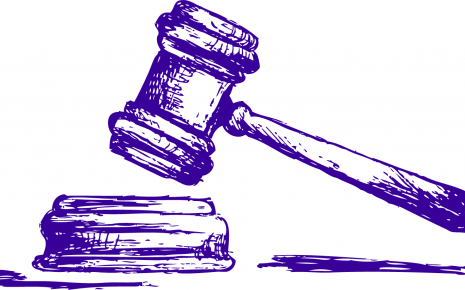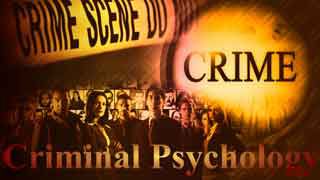Unveiling the Economic Dynamics of Organized Crime in the Modern World
In a world shaped by advancing technology and increasing global
interconnectivity, criminality has transcended borders, becoming an intricate
global phenomenon. The ever-expanding complexities of contemporary life have
given rise to a disturbing trend where individuals with anti-social inclinations
perceive criminality as a lucrative profession, a means to secure their
livelihoods. As a result, this change has paved the way for the rise of criminal
organizations. This article will explore the different facets of organized
crime, its significant financial influence, its economic evaluation, the various
activities it involves, and the far-reaching effects it inflicts on societies
globally.
Dr. Walter Reckless offers another perspective, defining organized crime as unlawful misadventures undertaken by a hierarchical structure, consisting of a boss, lieutenants, and operators, often with a specific timeframe in mind.
Organized Crime as Feudal Lords: Organized crime groups resemble early, autocratic chiefdoms and states more than modern states. Rather than bureaucrats, they are more akin to feudal lords who extract tribute and provide protection.
The Multifaceted Nature of Organized Crime: Organized crime encompasses a wide range of illegal activities. Members of highly organized and disciplined associations engage in supplying illegal goods and services. These activities include but are not limited to gambling, prostitution, loan sharking, narcotics, labor racketeering, and various other unlawful endeavors.
Organized Crime as an Economic Enterprise: Notably, organized crime bears a resemblance to legitimate economic ventures organized for illegal activities. It operates with the goal of conducting unlawful pursuits and, in some cases, utilizes illegal means even in legitimate business operations. The ultimate aim is to accumulate significant profits through illegal channels.
Organized Crime Worldwide: Organized crime exists in many countries, ranging from sophisticated mafias to youth street gangs. Examples include Italian and American mafias, Yakuza in Japan, Triads in Hong Kong, and others. Organized crime involves various legal and illegal economic activities, such as drugs, gambling, and prostitution.
The Power of Numbers: Group-Based Crime: The second defining feature of organized crime is its reliance on group-based methods. Criminal enterprises often operate as tightly-knit groups where individuals work together to achieve common objectives. This approach has both advantages and disadvantages, which we will explore in detail.
Advantages of Group-Based Crime: One of the primary advantages of group-based crime is the potential for reduced production costs. To illustrate this point, consider the task of stealing a piano. Whether conducted by a lawful moving company or a group of thieves, it is often more efficiently accomplished by employing multiple individuals. Each member of the group can contribute their skills and strengths, making the task smoother and quicker.
Additionally, group-based crime can benefit from the specialization of team members. For instance, one member may excel at opening safes, while another is skilled at swiftly removing stolen goods. This division of labor within the criminal organization can streamline operations and maximize efficiency.
Furthermore, the collaborative nature of group crime can aid in evading law enforcement. A well-coordinated team can bypass security measures like burglar alarms or facilitate quick getaways using getaway cars, minimizing the risk of arrest.
Disadvantages of Group-Based Crime: However, group-based crime is not without its drawbacks. First, the involvement of multiple individuals can increase the likelihood of detection. For example, when several people are suspiciously congregated around a warehouse late at night, it becomes easier for law enforcement to notice criminal activity in progress.
More critically, group-based crime introduces the risk of a compromised member aiding the police. This scenario can be understood through the lens of the classic "prisoner's dilemma."
The Prisoner's Dilemma: A Complex Challenge: The prisoner's dilemma is a concept that involves two arrested criminals deciding whether to confess to a jointly committed crime. In a standard scenario, these prisoners are isolated from one another, unaware of the choices the other is making with law enforcement. Given limited communication and the potential benefits of confession, confessing may appear to be the optimal strategy for each prisoner individually.
However, scholars have noted that both criminals would be better off if a third party could enforce an agreement between them not to confess. Such an agreement would change their expectations, eliminating the advantage of strategically confessing.
Yet, while this might seem beneficial to all criminal groups, it comes with its own set of challenges. The potential benefits of preventing individual members from cooperating with the police must be weighed against the costs of monitoring, detecting, and punishing those who transgress such agreements.
The portfolio of transnational organized crime is diverse, encompassing drug trafficking, human trafficking, migrant smuggling, money laundering, firearm trafficking, counterfeit goods, illegal wildlife trade, and even elements of cybercrime. These criminal networks exhibit remarkable adaptability, continuously evolving to exploit emerging opportunities.
The consequences of organized crime are profound, posing a direct threat to global peace and human security while undermining social, economic, cultural, and political development. The vast sums of money generated by these networks can corrupt legitimate economies and influence governance through corruption and manipulation of elections.
The human toll is devastating, resulting in countless lives lost due to drug-related health issues, violence, and the ruthless methods employed by human traffickers and migrant smugglers. Millions of victims suffer, their lives shattered by these criminal activities. Transnational organized crime is a dynamic and ever-changing industry, defying cultural, social, linguistic, and geographical boundaries. It operates without regard for borders or established norms, posing a formidable challenge to law enforcement agencies and policymakers
Transnational organized crime's complexity demands international cooperation, robust law enforcement efforts, and a comprehensive approach that addresses root causes and criminal networks.
Conclusion:
In conclusion, despite significant advancements in technology, economic development, and the expansion of governmental authority over the past couple of centuries, organized crime remains a presence, even in the wealthiest nations. This persistence indicates that there are still vulnerabilities in modern states, arising not only from the prohibition of certain goods like drugs but also from societal divisions based on ethnicity, race, and class.
As long as these vulnerabilities persist, providing opportunities for local power vacuums, organized crime will continue to emerge to exploit them. Merely high-profile efforts to combat or eradicate organized crime are unlikely to succeed unless they also address the underlying factors that give rise to these pockets of powerlessness.
References:
Organized Crime:
Organized crime can be broadly defined as criminal activities carried out jointly by two or more individuals in a systematically organized manner. These acts are illegal in nature and are committed by members of an unlawful association who cooperate and embark on ventures that often involve risk and adventure.Dr. Walter Reckless offers another perspective, defining organized crime as unlawful misadventures undertaken by a hierarchical structure, consisting of a boss, lieutenants, and operators, often with a specific timeframe in mind.
Organized Crime as Feudal Lords: Organized crime groups resemble early, autocratic chiefdoms and states more than modern states. Rather than bureaucrats, they are more akin to feudal lords who extract tribute and provide protection.
The Multifaceted Nature of Organized Crime: Organized crime encompasses a wide range of illegal activities. Members of highly organized and disciplined associations engage in supplying illegal goods and services. These activities include but are not limited to gambling, prostitution, loan sharking, narcotics, labor racketeering, and various other unlawful endeavors.
Organized Crime as an Economic Enterprise: Notably, organized crime bears a resemblance to legitimate economic ventures organized for illegal activities. It operates with the goal of conducting unlawful pursuits and, in some cases, utilizes illegal means even in legitimate business operations. The ultimate aim is to accumulate significant profits through illegal channels.
Organized Crime Worldwide: Organized crime exists in many countries, ranging from sophisticated mafias to youth street gangs. Examples include Italian and American mafias, Yakuza in Japan, Triads in Hong Kong, and others. Organized crime involves various legal and illegal economic activities, such as drugs, gambling, and prostitution.
Origins of Organized Crime:
- Organized crime's origins are linked to conditions of anarchy, power vacuums, and legal gaps.
- Geographical, political, social, and ethnic distances, along with prohibitions, create opportunities for organized crime to thrive.
- Organized crime emerges in conditions where property rights are not perfectly and costlessly enforceable.
- Property rights enforcement is expensive or imperfect, creating opportunities for organized crime to thrive.
- Organized crime is more likely in states with weak governance or where certain activities are prohibited, leading to power vacuums.
The Unique Role of Protection in Organized Crime:
- The primary function of organized crime groups is to provide protection, which is not a typical economic activity.
- Protection aims to safeguard the ownership of goods and enforce contractual exchanges through coercion.
- Unlike legal security firms, organized crime relies on force, specifically the threat of violence, for enforceability.
- The paradox is that this violent protection can be used against those it's supposed to protect, making organized crime distinct from traditional businesses.
Hierarchical Organization and Market Structure:
- Organized crime groups have hierarchical structures and engage in providing protection services.
- Organized crime groups often consist of a core group at the top responsible for strategy and relationships with suppliers.
- Local leaders hire enforcers, treasurers, and runners for risky tasks.
- Foot soldiers, who serve as street-level drug sellers, are recruited by enforcers.
- The organization functions similarly to a franchised company.
- Coordination costs and free-rider problems make it challenging for individuals to provide their own protection.
- Powerful mafias in the area prevent self-governing protection groups from forming.
- Some youth gangs have informal leadership, while others, like New York gangs, have a formal hierarchy.
- The Sicilian Mafia is hierarchically organized with formal procedures.
- Detailed information on the organization and finances of a Chicago drug-selling gang is available.
- Two types of competition exist: ordinary economic competition in terms of service quality and price and predatory competition for territory.
- Predatory competition negatively impacts economic efficiency.
- <
Cultural Ideologies:
- Organized crime groups develop cultures and ideologies.
- American youth gangs often believe that society discriminates against them and that predatory behavior is necessary for success.
- Gang activities are rationalized by members based on their worldview.
- Poverty and media hostility reinforce these beliefs.
Competition in Protection Services:
- Organized crime groups provide protection services to customers, such as shopkeepers.
- Protection services can vary in quality and quantity, affecting costs for the organized groups.
- Monopolistic groups aim to maximize their profit while offering protection packages just acceptable to customers.
- Competition from new entrants can lead to lower prices and higher-quality services.
- More competition among organized crime groups results in higher efficiency and better outcomes for customers.
Competition for Turf:
- Organized crime groups engage in competition for control over specific geographic areas or turfs.
- Competition for turf resembles historical battles among lords, kings, and emperors.
- Groups with superior force can deter or take over neighbors' turf, leading to an arms race.
- Organized crime market structure resembles a monopolistic competition with local monopolies maintained through force.
- Gangs can set extortionate prices for protection in their territories, as there are no alternative providers.
Effects of Competition on Economic Efficiency:
- Free entry and competition reduce profits in the long run, aligning them with other sectors of the economy.
- However, greater competition in the protection business leads to more resources devoted to violence and fewer to production.
- Cooperation among gangs could enhance economic efficiency by reducing predation, but it is often difficult to achieve due to institutional weaknesses and instability.
Unproductive Resource Allocation:
- Competition between organized crime groups leads to unproductive resource allocation.
- Gang and mafia members spend resources on maintaining a presence, defending territories, and preparing for conflict.
- These activities, including the purchase of guns, locks, and security measures, can be considered unproductive for the overall economy.
- The intensity of competition among multiple gangs can result in greater resource expenditure compared to a single dominant mafia or state.
Fundamental Characteristics of Organised Crime:
Two fundamental characteristics define organized crime: it is driven by profit, and it relies on group-based methods.The Power of Numbers: Group-Based Crime: The second defining feature of organized crime is its reliance on group-based methods. Criminal enterprises often operate as tightly-knit groups where individuals work together to achieve common objectives. This approach has both advantages and disadvantages, which we will explore in detail.
Advantages of Group-Based Crime: One of the primary advantages of group-based crime is the potential for reduced production costs. To illustrate this point, consider the task of stealing a piano. Whether conducted by a lawful moving company or a group of thieves, it is often more efficiently accomplished by employing multiple individuals. Each member of the group can contribute their skills and strengths, making the task smoother and quicker.
Additionally, group-based crime can benefit from the specialization of team members. For instance, one member may excel at opening safes, while another is skilled at swiftly removing stolen goods. This division of labor within the criminal organization can streamline operations and maximize efficiency.
Furthermore, the collaborative nature of group crime can aid in evading law enforcement. A well-coordinated team can bypass security measures like burglar alarms or facilitate quick getaways using getaway cars, minimizing the risk of arrest.
Disadvantages of Group-Based Crime: However, group-based crime is not without its drawbacks. First, the involvement of multiple individuals can increase the likelihood of detection. For example, when several people are suspiciously congregated around a warehouse late at night, it becomes easier for law enforcement to notice criminal activity in progress.
More critically, group-based crime introduces the risk of a compromised member aiding the police. This scenario can be understood through the lens of the classic "prisoner's dilemma."
The Prisoner's Dilemma: A Complex Challenge: The prisoner's dilemma is a concept that involves two arrested criminals deciding whether to confess to a jointly committed crime. In a standard scenario, these prisoners are isolated from one another, unaware of the choices the other is making with law enforcement. Given limited communication and the potential benefits of confession, confessing may appear to be the optimal strategy for each prisoner individually.
However, scholars have noted that both criminals would be better off if a third party could enforce an agreement between them not to confess. Such an agreement would change their expectations, eliminating the advantage of strategically confessing.
Yet, while this might seem beneficial to all criminal groups, it comes with its own set of challenges. The potential benefits of preventing individual members from cooperating with the police must be weighed against the costs of monitoring, detecting, and punishing those who transgress such agreements.
Deterrence and Challenges:
- Potential criminals, like any individuals, can be considered as rational as in any other economic setting. They compare the benefits with the expected costs of committing a crime.
- Society can deter crime by increasing the probability of detection and the severity of punishment.
- Organized crime groups coordinate their activities, making crimes difficult to detect.
- They also protect their members through bribery, threats, and violence against officials and witnesses.
- Successful campaigns against organized crime have been rare.
The Role of RICO in the United States:
- The Racketeer Influenced and Corrupt Organization (RICO) Act has proven to be a potent weapon against organized crime within the United States.
- RICO delineates a range of illicit activities and outlines punishments for offenses carried out as part of an ongoing criminal syndicate.
- Rather than focusing on individual criminal acts, RICO places its emphasis on identifying patterns of criminal behavior.
- RICO grants the authorities the ability to prosecute the leader of a criminal organization, even if they haven't personally engaged in criminal activities.
- The consequences of RICO violations can be quite severe, encompassing imprisonment, the forfeiture of assets, and civil reparations for victims.
- RICO is strategically designed to simplify the detection of criminal enterprises and ultimately eradicate organized crime groups.
Transnational Organised Crime:
Transnational organized crime is a sprawling global enterprise, engaging in a multitude of illegal activities that transcend borders. It generates staggering profits, with drug trafficking as a leading source of income. In 2009, it was estimated that this criminal industry raked in an astonishing $870 billion, equivalent to 1.5% of the global GDP, dwarfing international development assistance and merchandise exports.The portfolio of transnational organized crime is diverse, encompassing drug trafficking, human trafficking, migrant smuggling, money laundering, firearm trafficking, counterfeit goods, illegal wildlife trade, and even elements of cybercrime. These criminal networks exhibit remarkable adaptability, continuously evolving to exploit emerging opportunities.
The consequences of organized crime are profound, posing a direct threat to global peace and human security while undermining social, economic, cultural, and political development. The vast sums of money generated by these networks can corrupt legitimate economies and influence governance through corruption and manipulation of elections.
The human toll is devastating, resulting in countless lives lost due to drug-related health issues, violence, and the ruthless methods employed by human traffickers and migrant smugglers. Millions of victims suffer, their lives shattered by these criminal activities. Transnational organized crime is a dynamic and ever-changing industry, defying cultural, social, linguistic, and geographical boundaries. It operates without regard for borders or established norms, posing a formidable challenge to law enforcement agencies and policymakers
Transnational organized crime's complexity demands international cooperation, robust law enforcement efforts, and a comprehensive approach that addresses root causes and criminal networks.
Conclusion:
In conclusion, despite significant advancements in technology, economic development, and the expansion of governmental authority over the past couple of centuries, organized crime remains a presence, even in the wealthiest nations. This persistence indicates that there are still vulnerabilities in modern states, arising not only from the prohibition of certain goods like drugs but also from societal divisions based on ethnicity, race, and class.
As long as these vulnerabilities persist, providing opportunities for local power vacuums, organized crime will continue to emerge to exploit them. Merely high-profile efforts to combat or eradicate organized crime are unlikely to succeed unless they also address the underlying factors that give rise to these pockets of powerlessness.
References:
- Vimal Kumar and Stergios Skaperdas, On the Economics of Organized crime, Economics UCI (Feb. 13, 2008), https://www.economics.uci.edu/files/docs/workingpapers/2007-08/skaperdas-15.pdf
- https://www.unodc.org/toc/en/crimes/organized-crime.html
- William P. Jennings, A Note on the Economics of Organized Crime, http://www.jstor.org/stable/40324917
- Bester, Helmut and Warneryd, Karl, Conflict and the Social Contract, Scand. J. Econ. 108(2): 231-249 (2006).
- Carver, T. "South Africa; The Other Frontline," New Statesman Soc. 5:22�23 (1992).
- Clawson, P.L. and Lee, R.W. III, The Andean Cocaine Industry, St. Martin's Griffin, New York (1998).
Law Article in India
Legal Question & Answers
Lawyers in India - Search By City
LawArticles
How To File For Mutual Divorce In Delhi

How To File For Mutual Divorce In Delhi Mutual Consent Divorce is the Simplest Way to Obtain a D...
Increased Age For Girls Marriage

It is hoped that the Prohibition of Child Marriage (Amendment) Bill, 2021, which intends to inc...
Facade of Social Media

One may very easily get absorbed in the lives of others as one scrolls through a Facebook news ...
Section 482 CrPc - Quashing Of FIR: Guid...

The Inherent power under Section 482 in The Code Of Criminal Procedure, 1973 (37th Chapter of t...
The Uniform Civil Code (UCC) in India: A...

The Uniform Civil Code (UCC) is a concept that proposes the unification of personal laws across...
Role Of Artificial Intelligence In Legal...

Artificial intelligence (AI) is revolutionizing various sectors of the economy, and the legal i...








Please Drop Your Comments